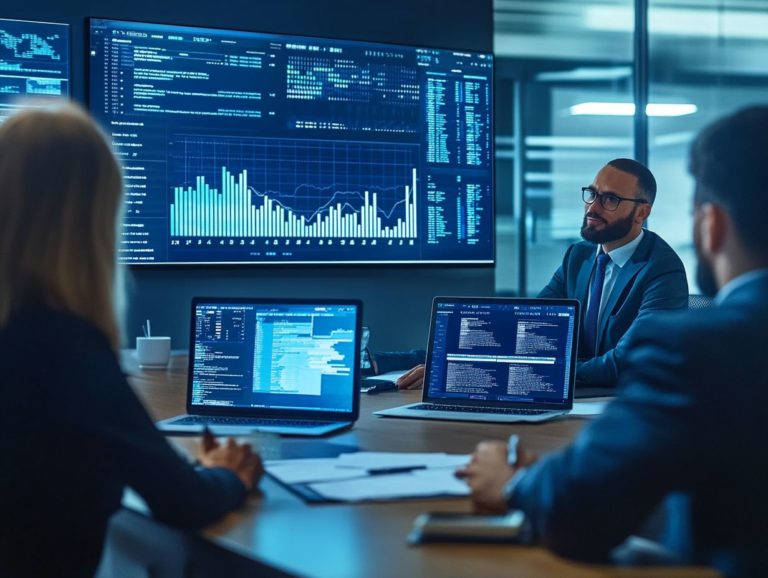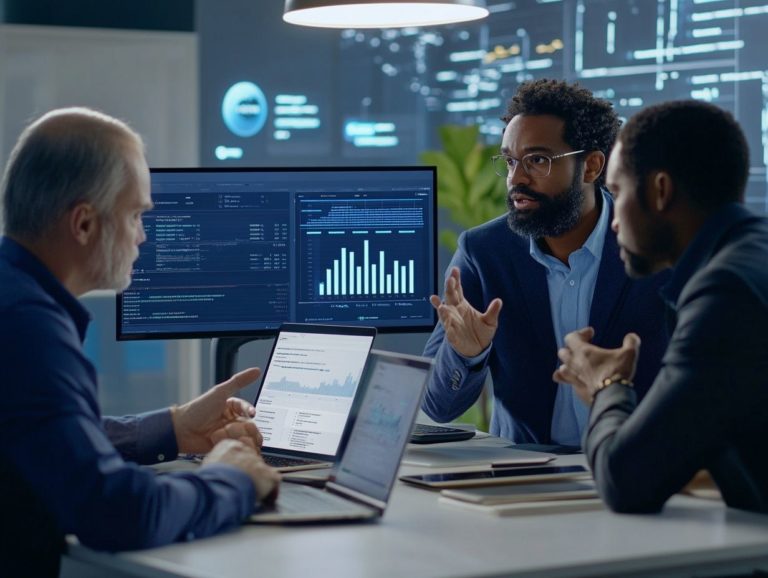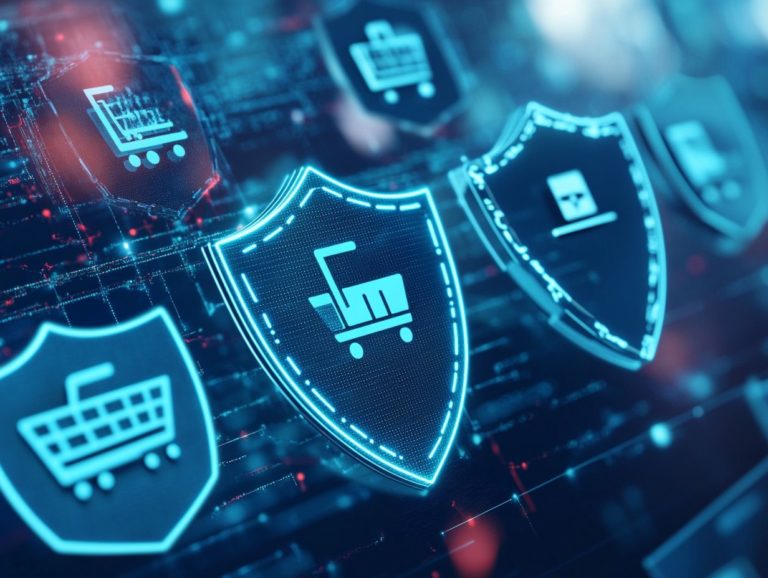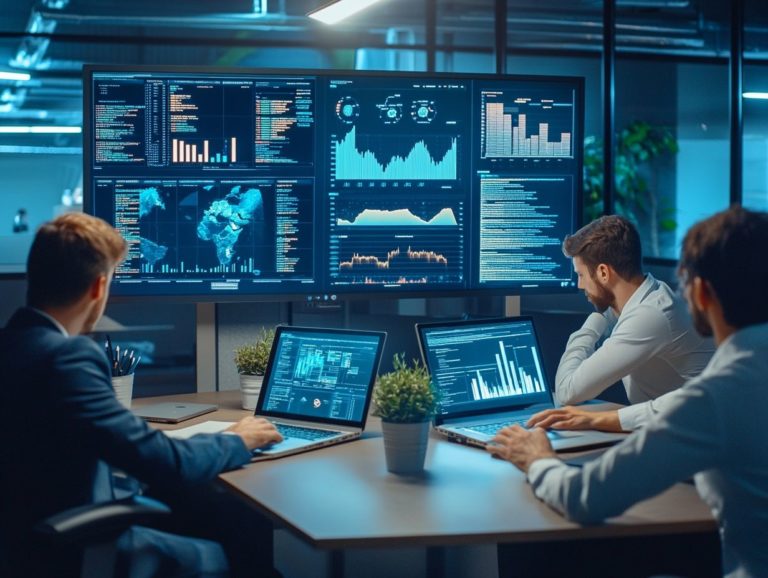5 essential tools for managed security services
In today s rapidly evolving digital landscape, safeguarding your sensitive information has never been more critical. Act now! The risk of cyber threats is growing every second, and with these threats becoming increasingly sophisticated, it may be wise to turn to managed security services to strengthen your defenses.
This article delves into five essential tools that are pivotal in enhancing your security posture:
- Security Information and Event Management (SIEM) tools
- Endpoint Detection and Response (EDR) tools
- Network Security Monitoring (NSM) tools
- Vulnerability Assessment and Management tools
- Identity and Access Management (IAM) tools
Explore how these technologies can streamline your threat detection and response processes, uncover their key features and benefits, and understand the challenges that may arise during implementation. Equip your organization with the right solutions to effectively navigate the complexities of modern security.
Contents
- Important Insights:
- 1. Security Information and Event Management (SIEM) Tools
- 2. Endpoint Detection and Response (EDR) Tools
- 3. Network Security Monitoring (NSM) Tools
- 4. Vulnerability Assessment and Management Tools
- 5. Identity and Access Management (IAM) Tools
- Why Are These Tools Essential for Managed Security Services?
- What Are the Key Features to Look for in These Tools?
- How Can These Tools Help with Threat Detection and Response?
- What Are the Benefits of Using These Tools for Managed Security Services?
- What Are the Challenges of Implementing and Managing These Tools?
- How Can Businesses Choose the Right Tools for Their Managed Security Needs?
- Frequently Asked Questions
- What are the 5 essential tools for managed security services?
- What is SIEM and why is it important for managed security services?
- Why is vulnerability scanning necessary for managed security services?
- What is the role of an intrusion detection system in managed security services?
- What are firewalls and how do they enhance managed security services?
- How does endpoint protection contribute to the overall effectiveness of managed security services?
Important Insights:
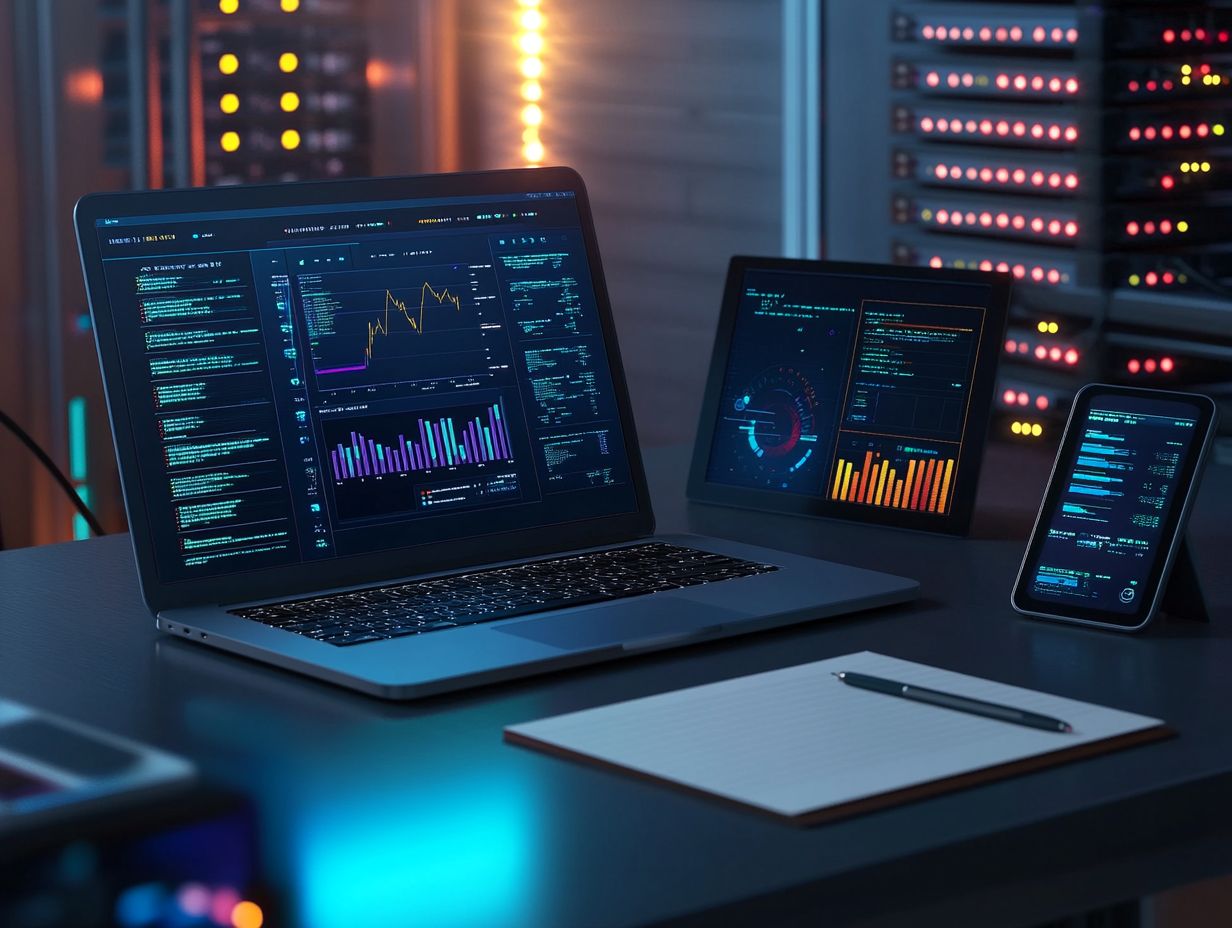
- SIEM, EDR, NSM, vulnerability assessment, and IAM tools are vital.
- Look for features like real-time monitoring and threat intelligence.
- These tools enhance threat detection and provide actionable insights.
1. Security Information and Event Management (SIEM) Tools
Security Information and Event Management (SIEM) tools are essential for elevating your organization s security posture. They aggregate and analyze security data from a variety of sources, giving you the power to detect and respond to cyber threats proactively.
These tools also help you maintain compliance with regulatory standards and safeguard sensitive customer data. They gather logs from network devices, servers, and applications, providing a comprehensive view of your security landscape, including the key features of effective managed security services.
By integrating seamlessly with other security solutions, like firewalls and intrusion detection systems, SIEM tools enhance your vulnerability management and incident response capabilities. Leading tools such as Splunk and IBM QRadar offer real-time analytics and customizable dashboards.
These features assist in compliance management, ensuring that you align with standards like GDPR and HIPAA. With built-in threat intelligence capabilities, these platforms enable you to stay ahead of potential threats by automatically correlating events and identifying risks based on emerging trends, ultimately strengthening your overall security framework.
2. Endpoint Detection and Response (EDR) Tools
Endpoint Detection and Response (EDR) tools are vital for identifying and mitigating security risks on your endpoints. They provide advanced capabilities to detect malicious software and ransomware attacks in real-time, effectively safeguarding your IT infrastructure.
These tools continuously monitor for threats and offer robust incident response functionalities for swift remediation of security breaches. In a managed security program, EDR plays a crucial role by analyzing endpoint data and helping your security teams understand the scope and impact of incidents.
When integrated with other security solutions, like firewalls and threat intelligence platforms, EDR creates a comprehensive security posture. This synergy enhances your overall security measures by ensuring a coordinated response to emerging threats.
3. Network Security Monitoring (NSM) Tools
Network Security Monitoring (NSM) tools are crucial for keeping a watchful eye on your network traffic. They allow your organization to detect and respond to security threats and vulnerabilities that could jeopardize your data security. To enhance your protection, consider these 5 questions to ask your managed security service provider.
By continuously analyzing the data packets that traverse your network, these tools help identify anomalies and unusual patterns that might signal malicious activities. When you integrate NSM with SIEM and EDR systems, you enhance the efficiency of your incident response efforts.
This collaboration enables you to correlate incidents across various platforms, providing a comprehensive view of potential threats. Popular NSM tools like Zeek and Suricata offer invaluable insights into network behavior and assist with compliance management.
Such integration not only facilitates timely threat detection but also fortifies your organization s overall security posture.
4. Vulnerability Assessment and Management Tools
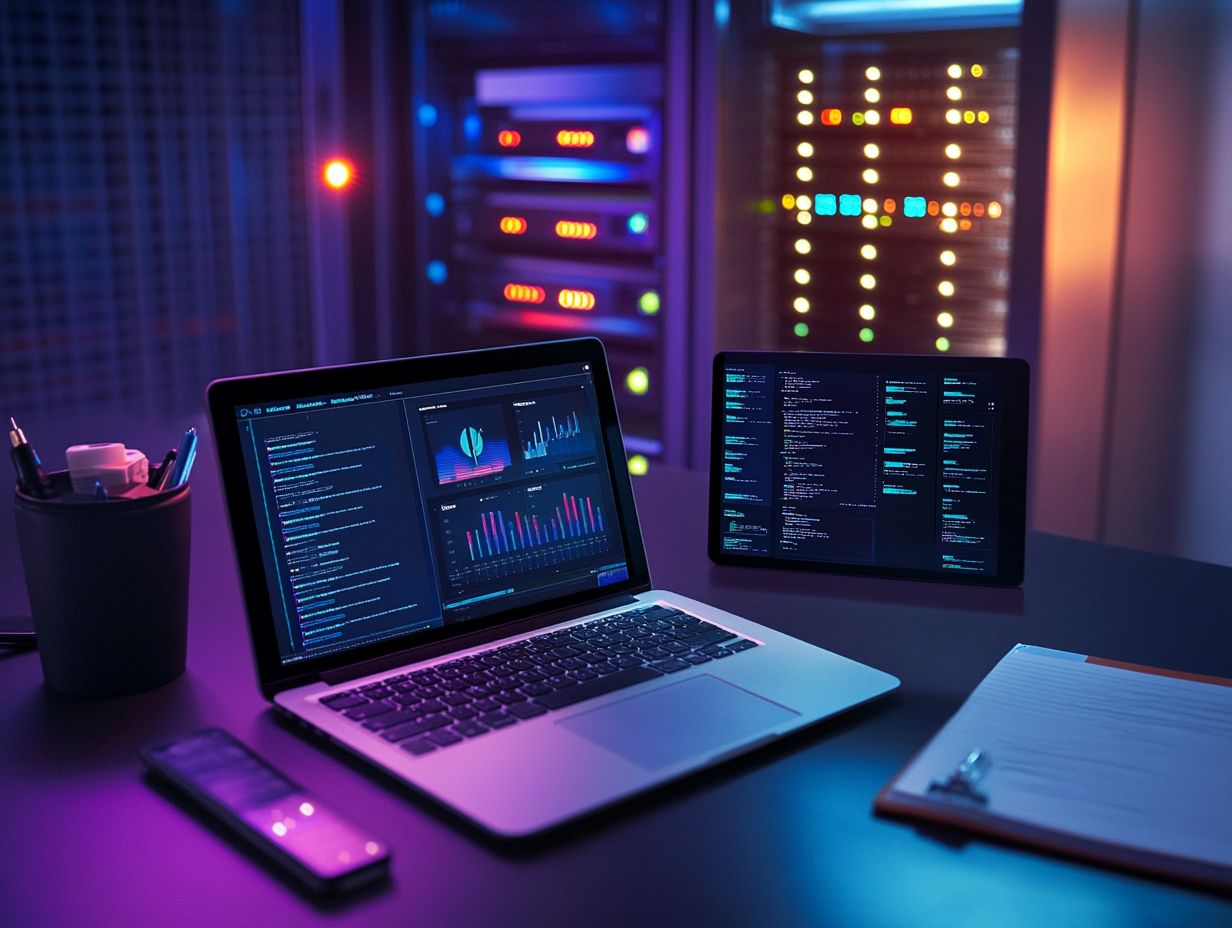
Vulnerability Assessment and Management tools are crucial for identifying, prioritizing, and reducing security risks in your organization s IT environment. They help ensure that your systems comply with regulatory standards and protect against cyber threats.
These tools use different methods, such as simulating cyber attacks and scanning, to find weaknesses in your software, applications, and network. By mimicking potential attackers, they uncover critical vulnerabilities, allowing you to strengthen your defenses.
In a managed security program, these tools play a vital role in continuous monitoring. Regular assessments help you quickly identify and address new vulnerabilities, creating a proactive defense strategy that integrates smoothly with other security solutions. For more guidance, consider these 5 tips for choosing managed security services.
This comprehensive approach not only enhances your security but also builds trust with stakeholders regarding data protection.
5. Identity and Access Management (IAM) Tools
Identity and Access Management (IAM) tools are essential for securing user identities and controlling access to sensitive data. They ensure that only authorized personnel can access critical IT resources, assisting with compliance and privacy policies.
These systems offer robust functions, including user authentication, which verifies an individual s identity before granting access. With IAM tools, you can set access rules based on roles, greatly reducing the risk of unauthorized access.
Furthermore, integrating User Entity & Behavioral Analytics enhances security by monitoring user activities and detecting unusual behavior that may indicate threats. This not only improves data protection but also simplifies compliance management, as IAM frameworks help demonstrate adherence to regulatory standards.
Why Are These Tools Essential for Managed Security Services?
The combination of Security Information and Event Management (SIEM), Endpoint Detection and Response (EDR), Network Security Monitoring (NSM), Vulnerability Assessment, and Identity and Access Management (IAM) tools is vital for any Managed Security Services provider. Understanding the 5 key indicators of quality managed security services can help ensure that these tools significantly bolster your organization’s security, enabling proactive threat detection and solid data protection strategies.
By aligning these tools, you streamline your security operations, making it easier to spot anomalies and respond quickly to incidents. For instance, a financial institution that combined SIEM and EDR reported a 30% reduction in incident response time, drastically reducing potential damages from cyber threats.
Similarly, a healthcare provider that integrated NSM and vulnerability assessment tools benefited from regular network traffic monitoring and weakness identification, leading to improved patient data security. These examples underscore how the cohesive operation of these tools elevates threat intelligence and encourages continuous improvement in security practices.
What Are the Key Features to Look for in These Tools?
- Advanced threat detection capabilities
- Compliance management functionalities
- Seamless integration with existing security solutions
- Real-time monitoring for swift threat identification and response
- Automated reporting for compliance standards
- User-friendly interface for easy navigation
These features not only strengthen your organization s defenses but also improve overall operational resilience, allowing your team to focus on proactive risk management.
In summary, take action now to implement these essential tools and follow the best practices for implementing managed security services to enhance your organization’s security measures.
How Can These Tools Help with Threat Detection and Response?
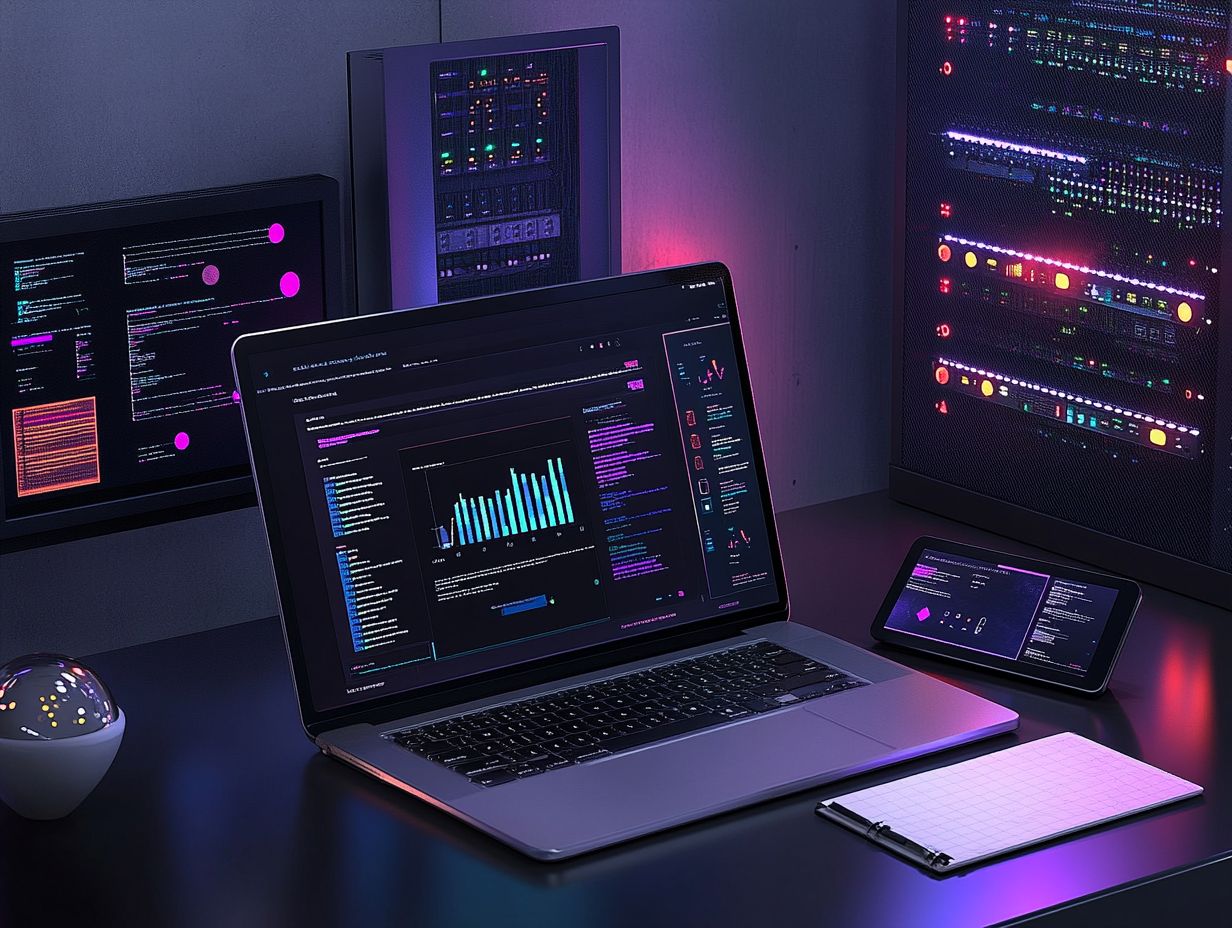
The deployment of advanced security tools can significantly enhance your organization’s ability to detect and respond to threats in real-time. This minimizes potential security risks while boosting your overall data protection.
These tools utilize various technologies, including machine learning algorithms, that analyze vast amounts of data to spot unusual behavior indicative of a cyber attack. Take, for example, a financial institution that implemented a next-gen firewall. They experienced a marked decline in phishing attempts thanks to the tool’s capacity to deliver timely alerts and automate actions that neutralized threats before they could escalate.
This proactive approach safeguards sensitive information. It also reinforces customer trust.
Automated response capabilities, like the immediate isolation of infected devices, empower you to contain breaches swiftly. This illustrates just how critical these tools are to a robust cybersecurity strategy.
What Are the Benefits of Using These Tools for Managed Security Services?
Utilizing a comprehensive suite of security tools offers you a wealth of benefits as a Managed Security Services provider. You’ll enjoy enhanced compliance management, improved threat intelligence, and, most importantly, access to 5 features every managed security service should have for greater customer satisfaction.
These advantages can lead to significant cost savings, as you can reduce both the frequency and impact of security incidents with proactive measures. Efficiency improvements will arise as automation streamlines your incident response processes, allowing your teams to concentrate on more strategic initiatives.
These tools enhance your security posture, reinforcing your defenses against potential threats. For those looking to strengthen their strategies, consider reviewing managed security service packages. A recent survey revealed that 70% of firms employing security tools that work together saw a 30% decrease in breaches.
Testimonials from various organizations show that implementing such frameworks not only minimizes risk but also cultivates trust among their customers.
What Are the Challenges of Implementing and Managing These Tools?
Implementing and managing security tools can present significant challenges for you. You’ll need to navigate complex compliance standards, address potential security risks, and ensure that advanced technology integrates smoothly into your existing IT environment. Considering these challenges, here are 5 reasons to invest in managed security services.
Integration issues often arise when new tools need to work seamlessly with legacy systems, resulting in operational inefficiencies. User training becomes critical; your employees must not only become familiar with the tools but also use them effectively in their daily routines.
Ongoing maintenance and updates can complicate matters, especially as security threats evolve continuously. To conquer these challenges, invest in exciting training programs, adopt a phased implementation strategy, and prioritize regular audits.
These approaches will help ensure that your security solutions are adopted efficiently and adapted to meet your evolving needs.
How Can Businesses Choose the Right Tools for Their Managed Security Needs?
Choosing the right security tools for your managed security needs is crucial for your safety! It demands a meticulous assessment of your organization’s requirements. You’ll need to evaluate potential security solutions, including 5 managed security services you should consider, and ensure they align seamlessly with your compliance management and data protection objectives.
To begin this journey, start by identifying your specific security risks through comprehensive risk assessments, which will reveal vulnerabilities unique to your operations.
Following that, it s essential to compare various vendor offerings, taking into account features, pricing, and their overall reputation in the market. Don t overlook scalability and ongoing support; these factors are crucial to ensure that your chosen tools can evolve alongside your organization.
Focus on making informed decisions that not only tackle your current challenges but also resonate with your long-term organizational goals. This approach will ultimately foster a resilient security posture that stands the test of time.
Frequently Asked Questions
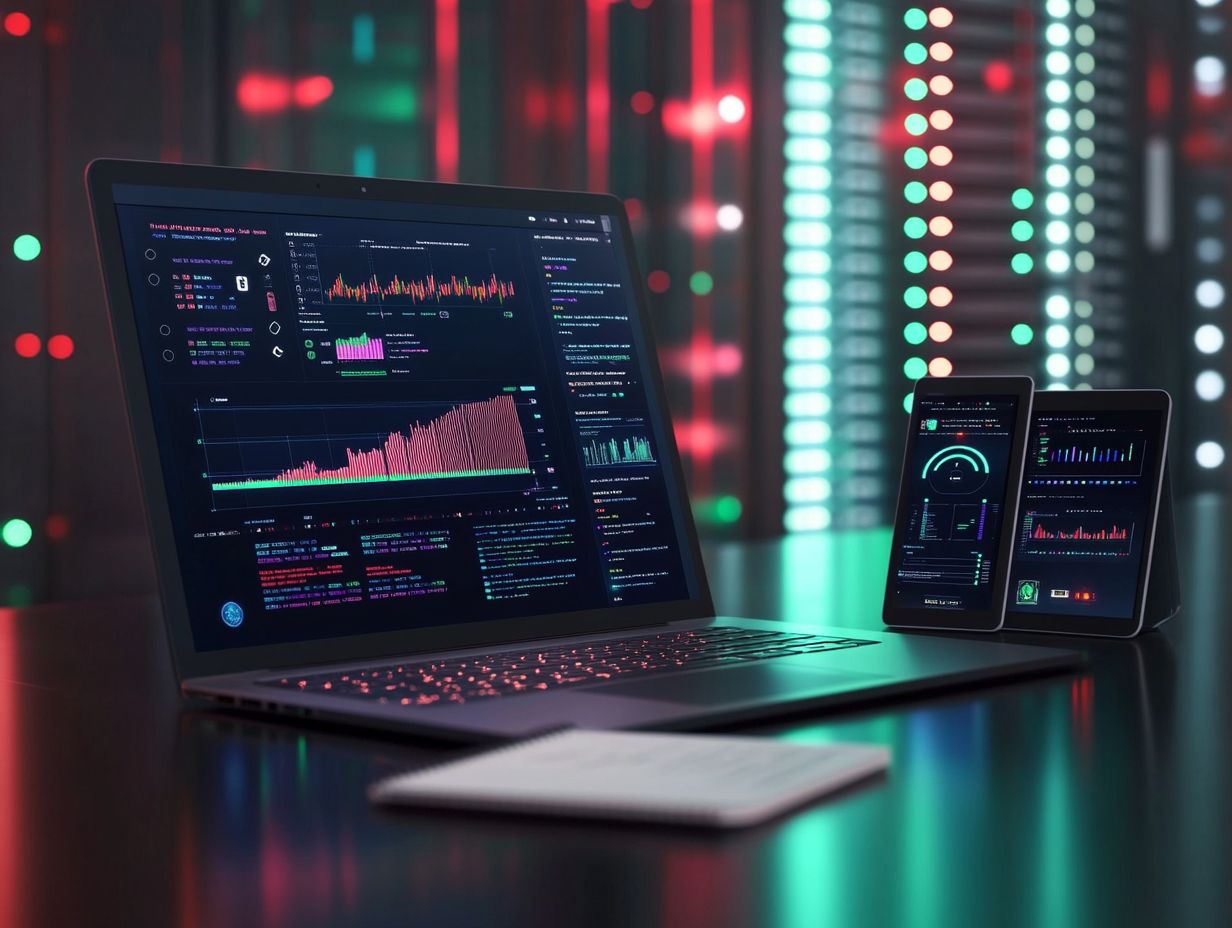
Let s address some common questions you might have.
What are the 5 essential tools for managed security services?
The five essential tools for managed security services are:
- SIEM
- Vulnerability scanning
- Intrusion detection system
- Firewalls
- Endpoint protection
What is SIEM and why is it important for managed security services?
SIEM stands for Security Information and Event Management. It is a centralized security control system that collects, aggregates, and correlates log data from various devices and systems. It is important for managed security services because it provides real-time threat detection, incident response, and compliance management.
Why is vulnerability scanning necessary for managed security services?
Vulnerability scanning is necessary for managed security services as it helps identify security gaps and weaknesses in a network or system. This enables managed service providers to proactively address these vulnerabilities and prevent potential cyberattacks.
What is the role of an intrusion detection system in managed security services?
An intrusion detection system (IDS) monitors network traffic for suspicious activity or security policy violations. It helps managed service providers quickly detect and respond to potential cyber threats, minimizing the impact of a security breach.
What are firewalls and how do they enhance managed security services?
Firewalls are network security tools that monitor and filter incoming and outgoing network traffic based on predetermined security rules. They act as a barrier between trusted internal networks and untrusted external networks, helping to prevent unauthorized access and potential cyberattacks.
How does endpoint protection contribute to the overall effectiveness of managed security services?
Endpoint protection is an essential tool for managed security services as it helps secure endpoints such as laptops, desktops, and mobile devices from cyber threats. It includes antivirus, anti-malware, and other security features that help protect endpoints from potential attacks, thereby enhancing the overall effectiveness of managed security services.

